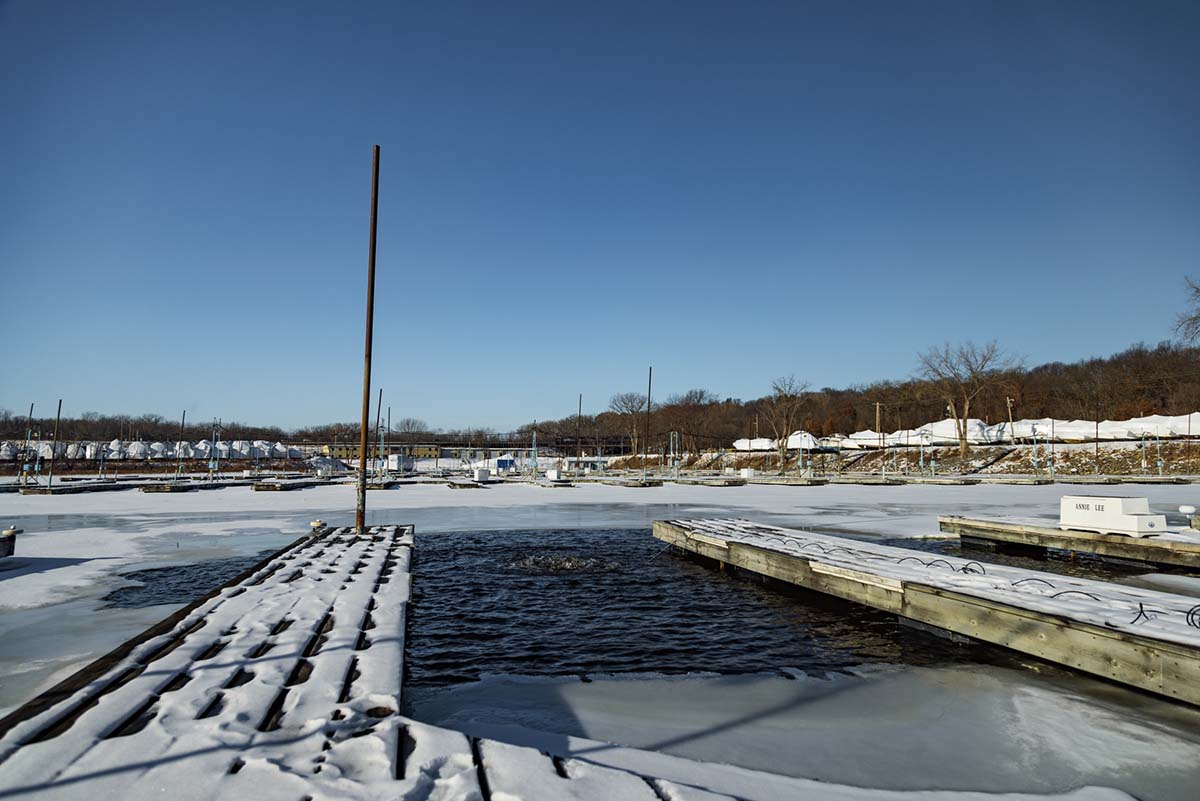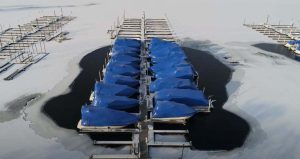
De-icing Tips and Why Proper Installation is Important
Published on August 23, 2022Winter can wreak havoc on marina infrastructure in the northern United States. In an effort to protect docks and slips and keep water open for oxygenation benefits, marina owners and operators often turn to de-icers to provide winter protection.
De-icers keep ice away by pulling warmer water up from the bottom of the water. As colder air temps settle in, the top layer of water also decreases in temperature causing it to rise in the water column. Colder water on top and warmer water on bottom creates a thermal stratification, or layering, in the water column, allowing the colder water to ultimately turn to ice at the surface. De-icers work to break up this temperature difference and prevent ice from forming.
There may not be a one-size-fits-all approach, as factors like location, elevation, and depth affect results, but de-icers are extremely efficient in keeping ice away and protecting valuable property.
Shallow Water De-icing
To de-ice a shallow water area, direct the flow of warmer water from the deeper area into the shallower area. Remember, a de-icer works because it draws warmer, denser water from the bottom and circulates it upward to the surface, preventing ice formation or melting existing ice. By positioning a de-icer near deep water areas and mounting it to angle back toward the shallow area, warm water can be successfully pushed toward the shallow areas and prevent ice formation.
Boat De-icing
If there are any boats left in a marina over the winter, whether for private use or maintenance around the marina, it’s important to keep these areas ice-free as well.
It is often easier to de-ice a boat by installing the de-icer at or near the bow, angled toward the stern. For large boats, it may take multiple units to properly de-ice the area, but following the natural contouring of the boat hull will provide the most effective results. De-icers can often be hung from cleats and suspended under the hull. For extremely wide hulls, it may be best to suspend units off either side.
Dock, Pier, and Shoreline De-icing
Ice has the potential to cause extreme damage to any property left in the water over winter. As water temperatures decrease and the water column becomes colder, ice will begin to form around in-water property. As ice forms, it expands and contracts causing it to shift its position along with the position of anything in its way. Docks can easily be torn apart and piling can be dramatically repositioned resulting in time-consuming, expensive fixes.
When de-icing a dock or pier, place the de-icer at an angle forcing the water back toward the shoreline. If the water flow is directed toward the shore or a retaining wall, it will flair to form a ”T” shape de-icing pattern. This flair will extend the total area of open water and provide an ample area of open water around the dock or pier. If shoreline de-icing is not desired, vertical installation is best and a curtain can be installed into the water to prevent flow beyond a given point, as desired.
Water Fluctuations
De-icing can be most detrimental in areas with tidal fluctuations. When the tide is high, ice will form higher on structures. When the water level recedes, the ice formation will be pulled away from the structure, potentially causing damage, and then will reform lower on the structure. This constant reformation can have devasting effects on property. High wind conditions act very much like tidal changes and can affect ice formation as well.
To de-ice in tidal waters, split the difference in water depth so the de-icer is always under water, no matter where the tide is. Install the de-icer shallow enough so it’s under water at low tide, but also deep enough that it’s in deeper water at high tide. You may need to experiment with this depth to ensure it’s installed at the right location. Another option is to tie a de-icer to a boat or floating dock and allow the boat/dock and de-icer to rise and fall with the tide.
Protecting an in-water property and shorelines from ice buildup through the harsh winter months is a smart decision and one that will save time and money in the spring.
Andy Gillis is a de-icing product specialist at Kasco. He can be reached at andy.g@kascomarine.com.
| Categories | |
| Tags |




